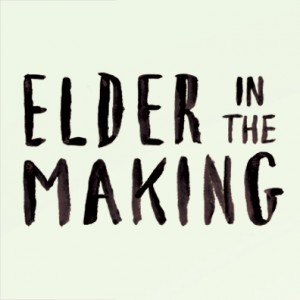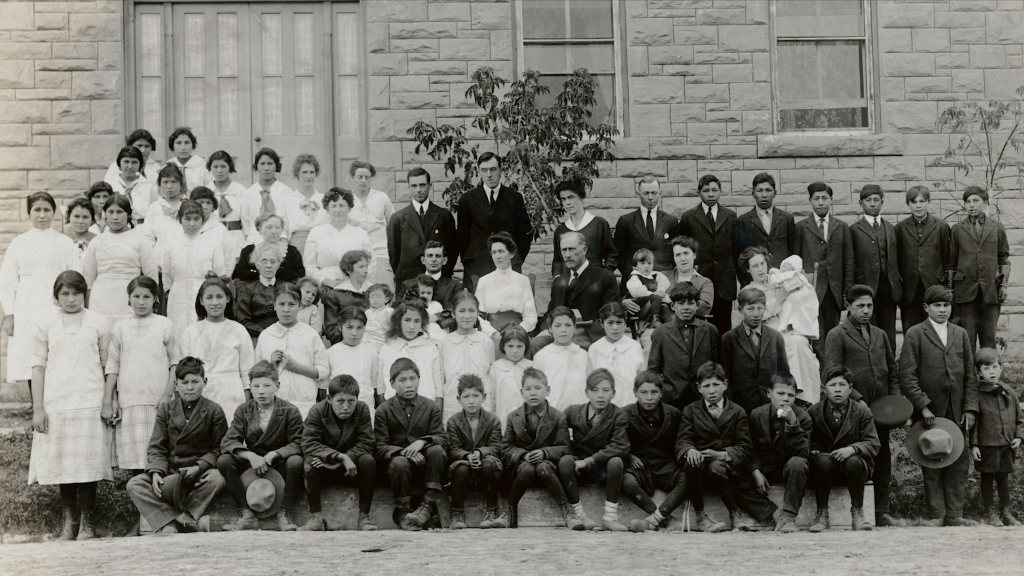Residential Schools were first introduced to the Canadian West in 1883, and the last Residential School closed its doors in 1996. The ubiquitous phrase, “killing the Indian in the child” has been used to describe the Canadian government’s goal in creating the Residential School system. It is difficult to attribute the phrase to a specific source, but it “may have evolved from ‘Kill the Indian, Save the Man’, a phrase used by Richard Pratt, the architect of the U.S. Residential School System”.
Our film, Elder in the Making, discusses the experience of one Residential School survivor, Narcisse Blood. Narcisse described his experience attending St. Mary’s Residential School in Cardston, Alberta, (now named Red Crow College), and explained that he is the third generation of his family to attend the school.
Children that were taken from their families and placed in Residential Schools were treated with disdain and disrespect. The children were dehumanized and, in many cases, were assigned a number that they would write on their clothes and personal effects, instead of using their actual names, or even the ‘Christian’ names given to them by the church. They endured all types of abuse at the hands of the nuns, teachers, principals, and other school administrators.
Physical abuse was used liberally to punish children who did not bend to the will of school officials, but it went far beyond hitting or slapping. The use of electric shock was a common punishment for disobeying, or if the child struggled with bedwetting (many accounts state that the child would be strapped to the bed and an electric device was placed under the sheets that would shock them if they urinated in their sleep). One interviewee from the film, Unrepentant: Canada’s Residential Schools Documentary, told the story of a boy who was stabbed through the hand with a pencil when he refused to stop speaking his own language.
The documentary also describes a particularly gruesome story where a child was placed naked in a bath, with a bucket of live snakes poured on top of them. In the most extreme cases, children were actually murdered by the very people employed to keep them safe. Many interviewees recalled the story of Maisie Shaw, a 6 year old girl who was kicked down the stairs by her principal and died from the impact. A 5 year old boy was killed by a nun when she kicked him and broke his neck, and he died in front of his classmates. Some reports state that as many as 50,000 children died in the Canadian Residential School system, other sources say that number is a conservative estimate and could be much higher.
It is difficult to determine the correct number of murdered children because of a variety of factors: improper record keeping, willful omission of details, and through the destruction of evidence by school officials.
Emotional abuse was equally as common, and most Residential School survivors feel like they lost their childhoods because they never knew what it was like to have loving parents and be surrounded by loving communities. In some cases, children were told that their parents had died, which was meant to dissuade the students from running away to join their families.
Sexual abuse was also a terrible reality for many of the children that attended Residential Schools. The sexual abuse was not only exercised by the male school staff, but also the female staff, and others who were not directly involved turned a blind eye to the horrific cases of abuse endured by the children.
“Germ warfare”, was actively used to cull the number of Indigenous students. When there was a tuberculosis outbreak, staff regularly exposed healthy children to infected children by making them sleep next to each other and play together, and often denying them aid or treatment. According to Dr. Peter Bryce, Head Medical Officer for Indian Affairs in 1907, “The mortality rate in the school often exceeds fifty per cent. This is a national crime”. In 1907, the Ottawa Citizen published an article stating that 69% of children in these schools were dying within a year of arriving, but even after being highlighted in the mainstream media, nothing was done to help.
Read more about Colonization and the Indian Act.

